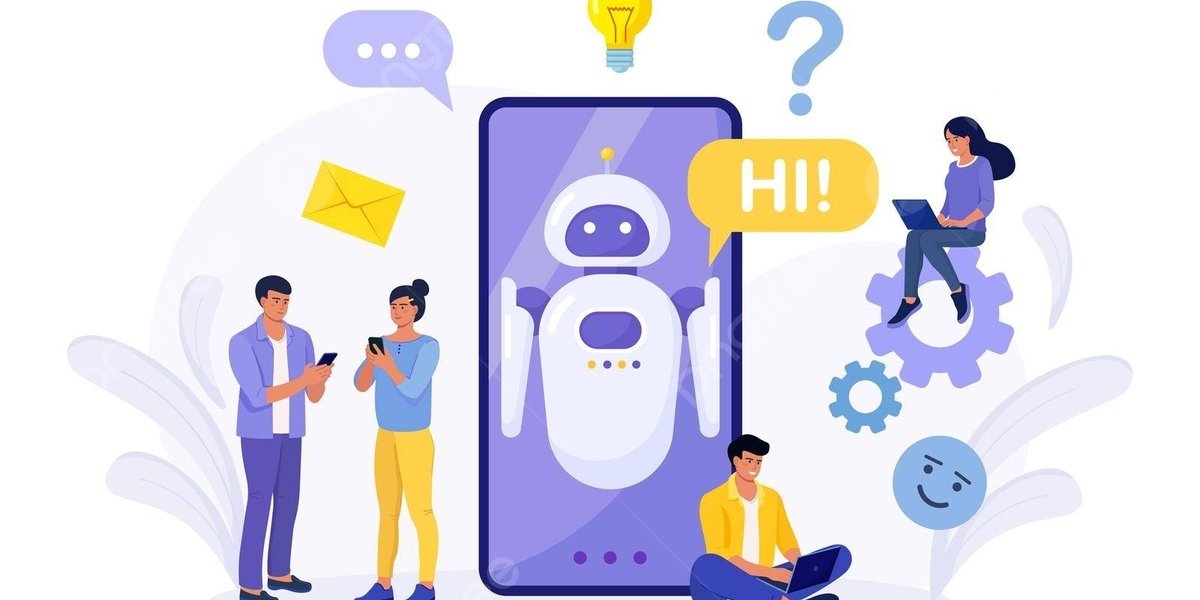In today’s hyper-connected, digital-first economy, enterprises face unprecedented pressures to innovate while maintaining operational efficiency and delivering exceptional customer experiences. Consumers now expect seamless, instant, and personalized interactions across all channels, while competition continues to intensify across industries. Against this backdrop, artificial intelligence (AI) has emerged as a transformative tool that allows organizations to achieve these objectives with speed, scale, and precision. Among the most powerful AI-driven innovations are AI voice bot solutions, which are redefining customer interactions, enhancing operational efficiency, and giving enterprises a strategic edge in the modern business landscape.
This blog delves into the rise of AI voice bot solutions, explores their impact on enterprise operations and customer engagement, and provides actionable insights into why they have become indispensable in the digital-first economy.
Understanding AI Voice Bot Solutions
AI voice bots are advanced conversational agents powered by natural language processing (NLP), speech recognition, and machine learning algorithms. Unlike traditional interactive voice response (IVR) systems, which rely on rigid, pre-defined scripts, AI voice bots understand natural human speech, can interpret intent, and respond contextually. This enables them to conduct fluid, human-like conversations that closely mimic interactions with live agents.
Key capabilities of AI voice bots include:
Advanced Speech Recognition: Accurate transcription of spoken language, even in noisy environments, enabling precise understanding of customer queries.
Natural Language Understanding (NLU): Interpreting customer intent beyond keywords, allowing nuanced comprehension of context and sentiment.
Multilingual Support: Communicating with users in multiple languages, critical for global enterprises serving diverse customer bases.
Integration with Backend Systems: Accessing CRM, ERP, and knowledge management systems to deliver personalized responses and resolve complex queries.
Real-Time Analytics: Tracking interaction patterns, sentiment, and operational metrics to continuously improve performance.
By combining these capabilities, AI voice bots not only handle routine customer interactions but also support sophisticated, data-driven decision-making, making them a cornerstone of modern enterprise strategy.
The Digital-First Economy and Enterprise Challenges
The digital-first economy is characterized by ubiquitous connectivity, rapid technological advancement, and heightened consumer expectations. Several key trends define this environment:
Omnichannel Customer Expectations: Customers expect consistent experiences across voice, chat, email, and social media channels. Disjointed interactions can erode brand loyalty.
Demand for Personalization: Modern consumers expect interactions that reflect their preferences, purchase history, and prior interactions, creating pressure for enterprises to deliver tailored experiences.
Operational Efficiency Pressure: Enterprises face rising costs and competitive pressures, making it crucial to optimize workforce utilization and process efficiency.
24/7 Availability: The global nature of business necessitates continuous support across time zones, which traditional human-only support models struggle to provide.
Data-Driven Decision-Making: The ability to leverage customer data for insights, forecasting, and proactive engagement is now a competitive differentiator.
Traditional solutions like manual call centers and static IVR systems are increasingly insufficient to meet these demands. This is where AI voice bot solutions offer a transformative advantage.
Strategic Benefits of AI Voice Bot Solutions
Enterprises adopting AI voice bot solutions experience multiple strategic benefits, spanning customer experience, operational efficiency, and business growth.
1. Enhancing Customer Experience
Customer experience (CX) has become a primary differentiator in the digital-first economy. AI voice bots elevate CX in several ways:
Faster Response Times: AI bots can handle thousands of simultaneous interactions, reducing wait times and ensuring instant resolutions for routine queries.
Consistent Quality: Unlike human agents, AI voice bots deliver consistent, error-free responses regardless of time or workload, enhancing reliability.
Personalized Interactions: By integrating with CRM systems, AI bots can reference past interactions, preferences, and purchase history, offering tailored recommendations and solutions.
Proactive Engagement: Advanced AI can identify patterns in customer behavior and proactively offer assistance, such as notifying a customer about a payment due or suggesting product upgrades.
These enhancements not only improve satisfaction but also foster loyalty and retention, critical factors for competitive differentiation.
2. Boosting Operational Efficiency
Operational efficiency is a significant driver for enterprise adoption of AI voice bots.
Reduced Workload for Human Agents: AI voice bots handle high-volume, repetitive tasks, freeing human agents to focus on complex or high-value interactions.
Scalability: Enterprises can rapidly scale AI voice bot capacity to manage peak demand without the overhead of hiring temporary staff.
Cost Savings: Automation reduces labor costs and minimizes human errors, delivering measurable ROI within months of deployment.
Data Collection and Insights: AI voice bots capture and analyze vast volumes of interaction data, enabling continuous improvement in processes, scripts, and customer engagement strategies.
By optimizing resource allocation and streamlining workflows, enterprises can achieve operational excellence while maintaining high service standards.
3. Driving Business Growth
Beyond operational efficiency, AI voice bots contribute directly to business growth:
Upselling and Cross-Selling Opportunities: AI bots can identify upselling or cross-selling opportunities based on customer preferences and purchase history.
Faster Onboarding: AI voice bots accelerate onboarding for new customers, providing guidance, answering FAQs, and reducing friction in adoption.
Market Expansion: Multilingual and 24/7 capabilities allow enterprises to serve global markets without additional staffing costs.
Enhanced Brand Perception: Offering cutting-edge AI-driven interactions reinforces a brand’s reputation as innovative and customer-centric.
These factors position AI voice bots not merely as support tools but as strategic drivers of revenue and market expansion.
Use Cases Across Industries
AI voice bot solutions are highly versatile, with applications spanning multiple industries:
Banking and Finance: Automating balance inquiries, fraud alerts, and loan application guidance while maintaining secure and personalized customer engagement.
Retail and E-commerce: Assisting with order tracking, product recommendations, and returns, enhancing the online shopping experience.
Healthcare: Managing appointment scheduling, patient reminders, and initial symptom assessments, reducing administrative burden on medical staff.
Telecommunications: Handling service troubleshooting, plan upgrades, and outage notifications, improving customer satisfaction and retention.
Travel and Hospitality: Providing flight updates, booking assistance, and itinerary recommendations to deliver seamless travel experiences.
In each of these sectors, AI voice bots not only improve efficiency but also provide actionable data to inform business strategy, predict trends, and optimize customer journeys.
Integration and Implementation Strategies
For enterprises to realize the full potential of AI voice bot solutions, strategic integration is crucial:
Seamless CRM Integration: Connecting AI voice bots with CRM platforms ensures interactions are personalized and contextually relevant.
Omnichannel Consistency: AI voice bots should be integrated across voice, chat, and email channels to maintain a cohesive brand voice.
Continuous Learning and Training: Machine learning models should be continuously trained on real-world interactions to improve accuracy, understanding, and response quality.
Compliance and Security: Data privacy and security must be prioritized, especially in regulated industries like finance and healthcare.
Hybrid Approach: Combining AI bots with human agents for complex queries ensures that customers receive the best of both worlds—efficiency and empathy.
A thoughtful, phased implementation allows enterprises to maximize ROI while minimizing disruption to existing operations.
Measuring ROI and Success Metrics
Enterprises must adopt robust metrics to measure the effectiveness of AI voice bot solutions:
First Call Resolution (FCR): Percentage of interactions resolved without escalation to human agents.
Average Handle Time (AHT): Time taken to resolve an inquiry, which typically decreases with AI voice bot adoption.
Customer Satisfaction (CSAT): Real-time feedback to assess the quality of interactions.
Cost per Interaction: Measuring operational savings delivered by automation.
Engagement Metrics: Frequency, duration, and outcomes of AI-driven interactions provide insights into user adoption and bot effectiveness.
Continuous monitoring and optimization based on these metrics ensure that AI voice bots deliver tangible business impact.
Future Trends in AI Voice Bot Solutions
AI voice bot solutions are evolving rapidly, with several trends shaping the future:
Hyper-Personalization: Leveraging AI to anticipate customer needs and deliver tailored experiences before the customer articulates a query.
Emotion Recognition: Detecting tone and sentiment to provide empathetic responses and escalate when necessary.
Voice Biometrics: Enhancing security and personalization through voice-based identity verification.
AI-Driven Insights: Using AI to predict customer behavior, optimize workflows, and inform strategic decisions.
Multimodal Interaction: Combining voice with visual interfaces, chatbots, and AR/VR elements for richer, immersive experiences.
Enterprises that adopt these advanced capabilities early will gain a distinct competitive advantage in the digital-first economy.
Overcoming Adoption Challenges
Despite the clear benefits, enterprises may face challenges in deploying AI voice bot solutions:
Change Management: Employees may resist AI integration if they perceive it as a threat rather than a support tool.
Technical Complexity: Integrating AI voice bots with legacy systems can be complex and resource-intensive.
Data Privacy Concerns: Ensuring compliance with regulations such as GDPR and HIPAA is critical.
Maintaining Human Touch: Striking the right balance between automation and human empathy is essential for high-value interactions.
Successful enterprises address these challenges through clear communication, employee training, robust data governance, and a hybrid automation strategy that prioritizes customer experience.
Conclusion
In the digital-first economy, where customer expectations are higher, competition is fierce, and operational efficiency is non-negotiable, AI voice bot solutions offer enterprises a powerful strategic edge. By delivering personalized, real-time, and scalable interactions, AI voice bots enhance customer experience, streamline operations, and unlock new opportunities for growth.
The adoption of AI voice bots is no longer a futuristic option; it is a strategic imperative. Enterprises that embrace these technologies gain a dual advantage: they meet the immediate demands of today’s digitally savvy customers and position themselves for sustained competitiveness in the evolving business landscape.
As AI voice bot solutions continue to advance, organizations that leverage them intelligently will be the ones defining the future of enterprise communication—where efficiency, personalization, and innovation converge to create unparalleled value.
Enterprises that fail to adopt these solutions risk falling behind competitors who are already leveraging AI to transform every customer interaction into a strategic advantage.








